1. Van den Bergh PY, Hadden RD, Bouche P, Cornblath DR, Hahn A, Illa I, et al. European Federation of Neurological Societies/Peripheral Nerve Society guideline on management of chronic inflammatory demyelinating polyradiculoneuropathy: report of a joint task force of the European Federation of Neurological Societies and the Peripheral Nerve Society - first revision. Eur J Neurol. 2010; 17(3):356–363. PMID:
20456730.

2. Van den Bergh PY, van Doorn PA, Hadden RD, Avau B, Vankrunkelsven P, Allen JA, et al. European Academy of Neurology/Peripheral Nerve Society guideline on diagnosis and treatment of chronic inflammatory demyelinating polyradiculoneuropathy: report of a joint task force-second revision. J Peripher Nerv Syst. 2021; 26(3):242–268. PMID:
34085743.

3. Van der Meché FG, Van Doorn PA, Meulstee J, Jennekens FG. GBS-consensus group of the Dutch Neuromuscular Research Support Centre. Diagnostic and classification criteria for the Guillain-Barré syndrome. Eur Neurol. 2001; 45(3):133–139. PMID:
11306855.

4. Sriwastava S, Sharma K, Khalid SH, Bhansali S, Shrestha AK, Elkhooly M, et al. COVID-19 vaccination and neurological manifestations: a review of case reports and case series. Brain Sci. 2022; 12(3):407. PMID:
35326363.

5. Abu-Rumeileh S, Abdelhak A, Foschi M, Tumani H, Otto M. Guillain-Barré syndrome spectrum associated with COVID-19: an up-to-date systematic review of 73 cases. J Neurol. 2021; 268(4):1133–1170. PMID:
32840686.

6. Oh SJ. Clinical Electromyography: Nerve Conduction Studies. Philadelphia, PA, USA: Lippincott Williams & Wilkins;1993.
7. Hanson KE, Goddard K, Lewis N, Fireman B, Myers TR, Bakshi N, et al. Incidence of Guillain-Barré syndrome after COVID-19 vaccination in the Vaccine Safety Datalink. JAMA Netw Open. 2022; 5(4):e228879. PMID:
35471572.

8. Kim JE, Min YG, Shin JY, Kwon YN, Bae JS, Sung JJ, et al. Guillain-Barré syndrome and variants following COVID-19 vaccination: report of 13 cases. Front Neurol. 2022; 12:820723. PMID:
35153993.

9. Leonhard SE, Mandarakas MR, Gondim FA, Bateman K, Ferreira ML, Cornblath DR, et al. Diagnosis and management of Guillain-Barré syndrome in ten steps. Nat Rev Neurol. 2019; 15(11):671–683. PMID:
31541214.
10. Suri V, Pandey S, Singh J, Jena A. Acute-onset chronic inflammatory demyelinating polyneuropathy after COVID-19 infection and subsequent ChAdOx1 nCoV-19 vaccination. BMJ Case Rep. 2021; 14(10):e245816.
11. Abo-Zed A, Pinevich A. Guillain-Barré syndrome, or acute on chronic inflammatory demyelinating polyneuropathy, following Moderna COVID-19 vaccine. Chest. 2021; 160(4):A898.
12. de Souza A, Oo WM, Giri P. Inflammatory demyelinating polyneuropathy after the ChAdOx1 nCoV-19 vaccine may follow a chronic course. J Neurol Sci. 2022; 436:120231. PMID:
35313224.

13. Pascual-Goñi E, Martín-Aguilar L, Querol L. Autoantibodies in chronic inflammatory demyelinating polyradiculoneuropathy. Curr Opin Neurol. 2019; 32(5):651–657. PMID:
31306213.
14. Albert LJ, Inman RD. Molecular mimicry and autoimmunity. N Engl J Med. 1999; 341(27):2068–2074. PMID:
10615080.

15. Kim JW, Kim YG, Park YC, Choi S, Lee S, Min HJ, et al. Guillain-Barre syndrome after two COVID-19 vaccinations: two case reports with follow-up electrodiagnostic study. J Korean Med Sci. 2022; 37(7):e58. PMID:
35191234.

16. Maramattom BV, Krishnan P, Paul R, Padmanabhan S, Cherukudal Vishnu Nampoothiri S, Syed AA, et al. Guillain-Barré syndrome following ChAdOx1-S/nCoV-19 vaccine. Ann Neurol. 2021; 90(2):312–314. PMID:
34114256.

17. Patel SU, Khurram R, Lakhani A, Quirk B. Guillain-Barre syndrome following the first dose of the chimpanzee adenovirus-vectored COVID-19 vaccine, ChAdOx1. BMJ Case Rep. 2021; 14(4):e242956.

18. Singh S, Sanna F, Adhikari R, Akella R, Gangu K. chronic inflammatory demyelinating polyneuropathy post-mRNA-1273 vaccination. Cureus. 2022; 14(4):e24528. PMID:
35651399.

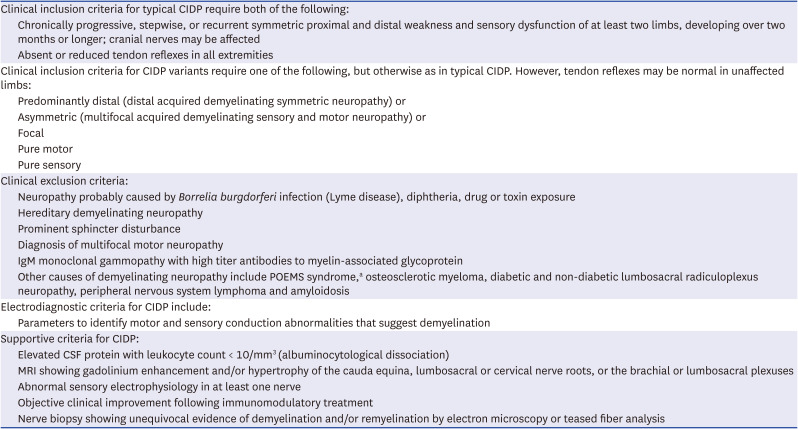
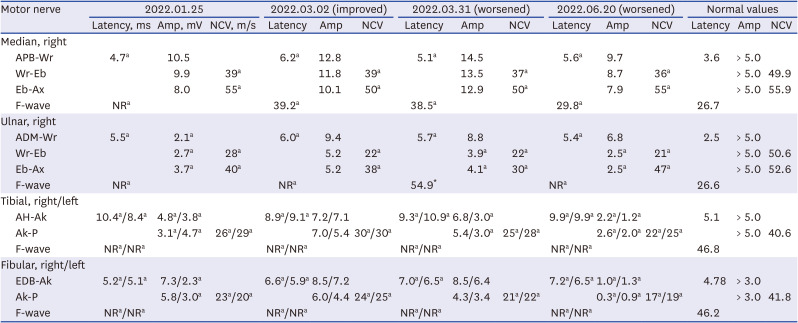

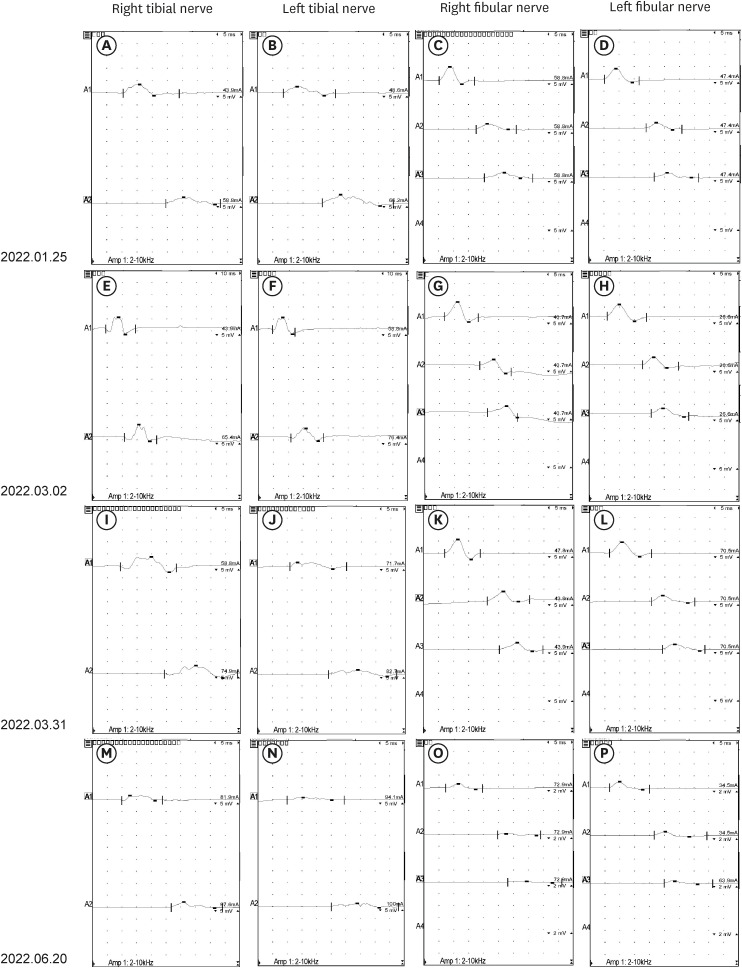
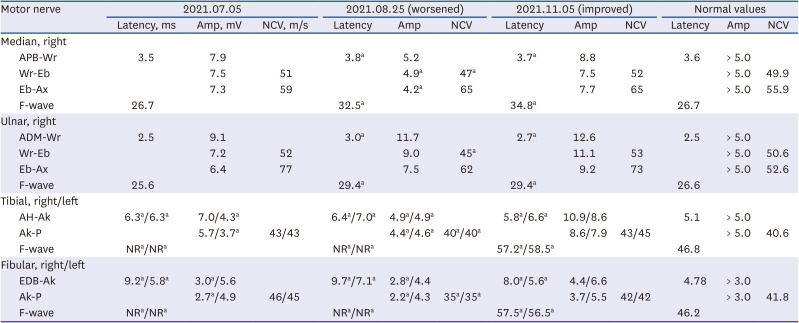

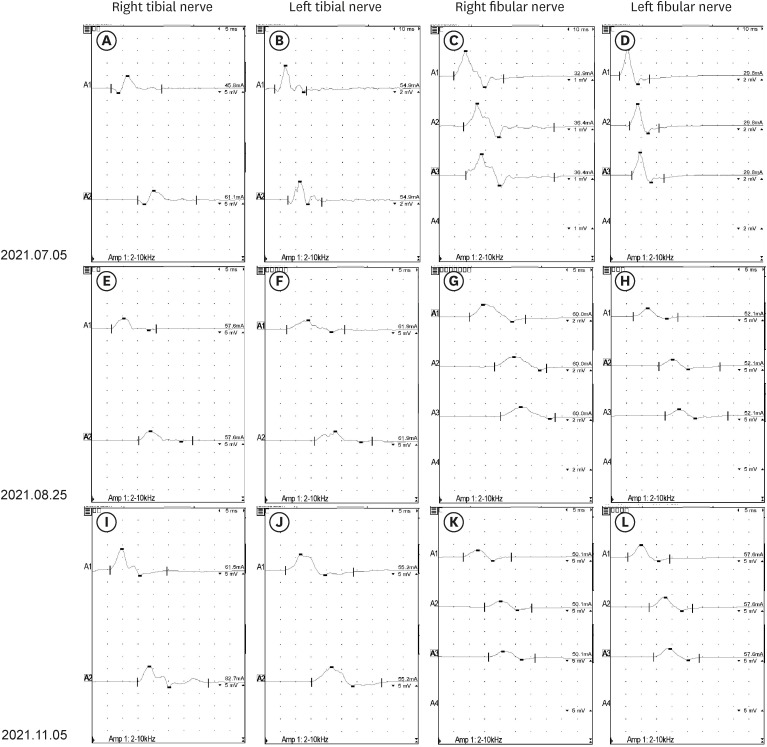




 PDF
PDF Citation
Citation Print
Print



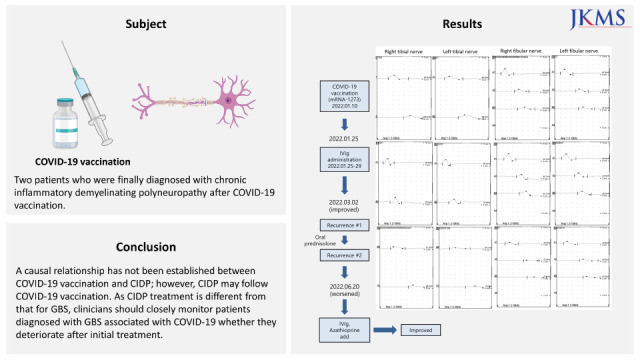
 XML Download
XML Download